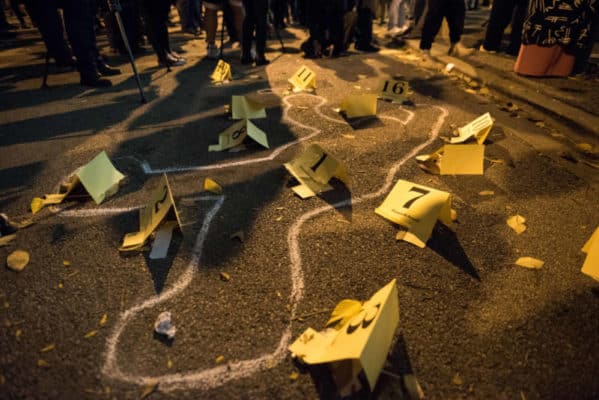Violent Crime in U.S. Rises for Second Consecutive Year
Timothy Williams, New York Times, September 25, 2017

Credit Image: © Max Herman/NurPhoto via ZUMA Press
Violent crime, including homicides, rose for the second consecutive year in 2016, driven by increases in a few urban centers including Baltimore, Chicago and Las Vegas, according to F.B.I. data released Monday.
{snip}
“This is ominous,” said Mark Kleiman, a criminologist at New York University’s Marron Institute of Urban Management. “What you worry about is that the trend is broken, and the numbers are going to go back up. A 20 percent increase in homicides over the past two years is not trivial. We’ve got what looks like a serious problem here.”
{snip}
“There are pockets of increased violence across the country that demand an increased response from all levels of government,” said Adam Gelb, director of the public safety project at The Pew Charitable Trusts. “But there is no indication that we’re in the midst of a crime wave, and no justification to return to the failed policies of the past.”
He added: “What’s going on? No one really knows. And if someone says they do know, you ought to be deeply suspicious. It’s too early to tell anything.”
Among the reasons cited for the increase are a profusion of handguns, poverty and social isolation, warring gangs involved in the drug trade, and police officers who are questioning fewer people and making fewer arrests for fear of being criticized by superiors and civil rights groups.
Each hypothesis has its detractors. But one theory that has gained traction of late is that violence has increased as police legitimacy has been questioned after the fatal police shootings of unarmed African-Americans. The shootings, many of which have been captured on video over the last three years, have been widely disseminated via the news media and on the internet.
Proponents of the theory maintain that in cities where police departments treat citizens with disrespect and engage in brutality, residents will eventually stop cooperating with the police, which will diminish officers’ ability to solve crimes. The result, according to the argument, is that the most violence-prone people in a particular area will be free to continue committing crimes with little fear of arrest.
{snip}
Among the cities that have experienced recent upticks in murder coupled with questionable police shootings that prompted rioting or other civil disturbances are Chicago, Baltimore, Charlotte, St. Louis and Milwaukee. But other cities where there have been significant increases in homicides in recent years, including Las Vegas and Memphis, have been largely free of public anger in response to fatal police shootings.
In 2016, Chicago again led the nation in murders with 765 — more than double the 335 people killed in New York, which has more than 5.8 million more people than Chicago.
In Chicago and elsewhere, murder victims, as well as those arrested on murder charges, were disproportionately young, African-American and male, according to the F.B.I. records and data from local law enforcement agencies. The overwhelming weapon of choice was a firearm, responsible for four of five killings in 2016.
{snip}















